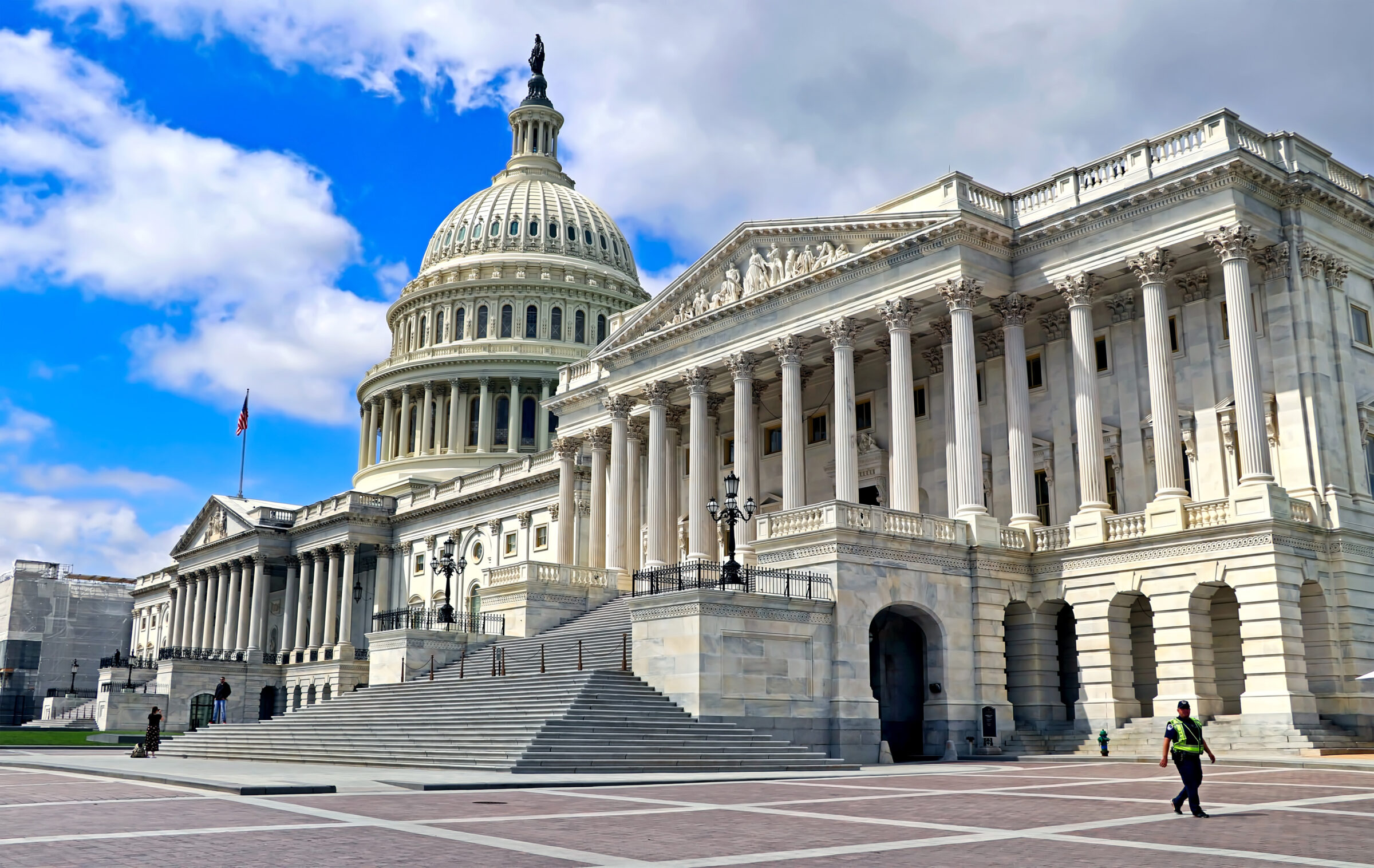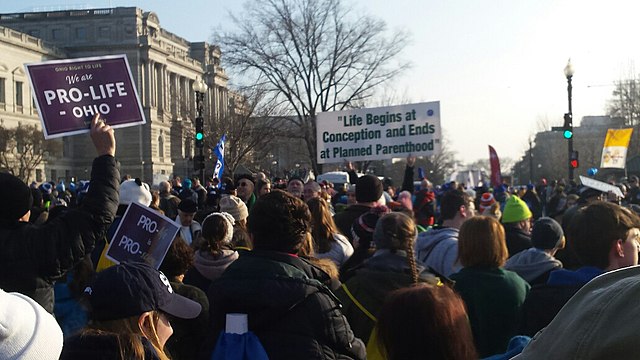


Peter Singer Compares Abortion to Turning Off a Computer

Colorado Outlaws Medical-Abortion Reversal

How Assisted Suicide Advocacy Overturned Roe v. Wade
Back in the 1990s, noting the success of abortion rights advocacy in the federal courts, the assisted-suicide movement moved to circumvent the democratic process by convincing the United States Supreme Court to impose an assisted suicide Roe v. Wade: a decision that would establish doctor-prescribed or administered death as a national constitutional right. The assisted suicide advocates succeeded in obtaining two Supreme Court hearings. However, in a delicious irony, not only did their cases fail abysmally, but the precedent the Supreme Court established in one of the cases would years later become the hammer that shattered the constitutional right to abortion. The Attempt to Declare Washington’s Law Banning Assisted Suicide Unconstitutional In 1994, the assisted suicide advocacy group Compassion in Dying (now merged with the Hemlock Society to become Compassion and Choices) joined with three dying patients and five physicians to challenge Washington’s then-existing law that criminalized assisted suicide. The record prior to reaching the high court was mixed: The plaintiffs had won in the trial court, then lost in the U.S. Court of Appeals for the Ninth Circuit, where a threejudge panel ruled that Washington’s law was constitutional. Then, the notoriously liberal Ninth Circuit granted an en banc hearing by 11 judges, which (in an eight-to-three decision) found that Washington’s law against assisted suicide was indeed unconstitutional. Although it never became law, the decision of the en banc court, written by Chief Judge Stephen Reinhardt, is worth pondering because it illustrates the true pro-euthanasia mindset and broad agenda of the euthanasia movement. First, the majority quickly and hubristically dismissed the court’s obligation to apply the law as written and to depend on previous rulings: “We must strive to resist the natural judicial impulse to limit our vision to that which can plainly be observed on the face of the document before us, or even that which we have previously had the wisdom to recognize.” Thus freeing themselves of the usual constraints that serve to limit the scope of judicial rulings, Reinhardt and seven of his colleagues in effect licensed themselves to create new constitutional rights out of whole cloth: The wording of the United States Constitution, the binding nature of judicial precedent, and even the vote of the people of Washington only five years earlier rejecting legalization of assisted suicide carried no weight. (By 2008, voters had changed their minds about the issue and legalized assisted suicide for the terminally ill in Initiative 1000.) The Compassion in Dying ruling relied on opinion polls for justification; it blurred sensitive and vital distinctions and was rife with factual error. For example, the eleven-judge panel found: “Unlike the depressed twenty-oneyear-old, the romantically devastated twenty-eight-year-old, the alcoholic forty-year-old . . . who may be inclined to commit suicide, a terminally ill, competent adult cannot be cured.” Yet, there are many cases of people diagnosed as near death who live for many years. Judge Reinhardt also wrote: “While some people who contemplate suicide can be restored to a state of physical and mental well-being, terminally ill adults who wish to die can only be maintained in a debilitated and deteriorating state, unable to enjoy the presence of family or friends.” But that is both alarmist and a false paradigm. Medical science has tremendous abilities to palliate the symptoms associated with the end of life. I witnessed such beneficence with my own parents, who both died naturally under the compassionate care of hospice professionals. But factual inaccuracies were a minor problem compared to the rest of Judge Reinhardt’s decision. Officially, the case stood for the (now defunct) proposition that there is a fundamental liberty interest in the United States Constitution in allowing citizens a “right to die.” Unlike other constitutional rights, however, this “liberty interest” would not have been available to all people. Rather, deciding who did or did not possess it would have involved a sliding scale—with some lives deserving of greater protection by the state than others. According to Reinhardt, the state had the highest interest in protecting the lives of the “young and healthy” from suicide, but not much interest in protecting those “who are diagnosed as terminally ill” from suicide. So long as the dying were not coerced into choosing death and were mentally competent (both extremely questionable propositions), Reinhardt and his seven majority-opinion colleagues would have granted them an almost absolute right to choose to be assisted in their suicide by a doctor. Judge Reinhardt’s decision would also have opened the door to hastening the deaths of people with disabilities: There are . . . subtle concerns . . . advanced by some representatives of the physically impaired, including the fear that certain physical disabilities will erroneously be deemed to make life “valueless.” While we recognize the legitimacy of these concerns, however, we also recognize that seriously impaired individuals will, along with nonimpaired individuals, be the beneficiaries of the liberty interest asserted here—and that if they are not afforded the option to control their own fate, they like many others will be compelled against their will to endure protracted suffering. Judge Reinhardt even legitimized money worries as a reason for seeking medicalized suicide: While state regulations can help ensure that patients do not make uninformed, or ill-considered decisions, we are reluctant to say that, in a society in which the costs of protracted health care can be so exorbitant, it is improper for competent, terminally ill adults to take the economic welfare of their families and loved ones into consideration. Not only that, but Judge Reinhardt’s decision would have allowed active euthanasia: We recognize that in some instances, the patient may be unable to self-administer the drugs and that administration by a physician, or a person acting under his direction or control, may be the only way the patient may receive them. He also endorsed nonvoluntary killings of the incompetent—which, by definition, includes children, who generally are not allowed to make their own healthcare decisions—by allowing surrogates to choose death for their wards: “We should make it clear that a decision [to end a patient’s life] of Read More ›

Oregon Legislation Would Allow Children to Decide About Abortion/Transgenderism Without Parental Consent

Washington Democrats Vote to Shield Runaway Transgender Kids and Girls Seeking Abortion from Parents

The ‘Pregnancy Tissue’ Deflection

To Reduce Abortions, Should Giving Birth Be Free?

Progressivism Colonizes the Science Journals

Pro-Abortion MDs Want Media to Cancel Pro-Life Voices
The media already mostly ignores anti-assisted-suicide voices in its biased reporting on that issue. Now, Physicians for Reproductive Health — an organization of pro-abortion medical and non-medical activists — is pushing the media to ban all pro-life voices from its reporting on abortion. From the organization’s open letter to the media, “Stop Giving Airtime to Anti-Abortion Extremists“: We are writing today with a big request: stop giving air-time to anti-abortion activists. As the undersigned over 600 providers of abortion care, people who have had abortions and will have abortions, abortion advocates, and individuals who work with the media regularly, we could not be more concerned for the safety and well-being of our communities, in part because of the misinformation, disinformation, and inflammatory threats shared and encouraged by anti-abortion activists in the media. Abortion is one of the most important moral, political, and cultural issues of the current moment. It will, of necessity, become a difficult discourse and debate. These zealots, however, pretend that there is only one legitimate point of view. But this is ridiculous. For example, many abortion absolutists claim that pro-lifers are “racist” because restrictions on abortion will “disproportionately” impact women of color (based on the demographics that African Americans have a higher percentage of abortions than white women). But it is an odd form of racism that wants more babies of color born rather than fewer. See what I mean? The letter pretends that supporting abortion is based on scientific fact: We know your reporting standards are to cover “both sides” of any debate. Allow us to be clear: Medicine and science are not up for debate. Health care is not a matter of opinion, it is a matter of fact. And the fact is, abortion is not in the realm of theory or belief. Abortion belongs in health care, social services, and public health reporting. What baloney. Science can tell us what is destroyed in an abortion — a gestating human being. It cannot tell us whether destroying that nascent life is moral, immoral, or morally neutral. The analysis of that question is found in the realms of morality, philosophy, political, and/or religious discourse. In other words, finding a proper abortion policy is not a question of objective fact, but precisely a matter of subjective opinion. The letter also claims that giving a voice to “extremists” — meaning anyone who is pro-life — threatens the safety of workers in the abortion industry and encourages protests. Of course, no one should threaten, harass, or attack anyone, but these days, the ones doing most of the attacking and harassing are pro-abortion zealots against Supreme Court justices, crisis-pregnancy centers, and Catholic churches. Only listen to “the real experts,” the zealots urge: If you believe in the evidence-based reasoning of medical care, if you believe in keeping communities safe, and if you believe in centering the needs of experts of an issue, in this case people who have and provide abortions, then we ask that you interview and center the real experts of this area of medicine. This call to the media to ban pro-life voices from the discourse — as if media’s reporting isn’t already overwhelmingly weighted to the pro-choice side — is not only profoundly anti-democratic, but it would heighten already too-hot community tensions. This call for organized media censorship not only reflects the anti-democratic consequence of being is so caught up in one’s own supposed righteousness that disagreement becomes unbearable, but it is a fool’s errand. Pro-life voices are not going away.